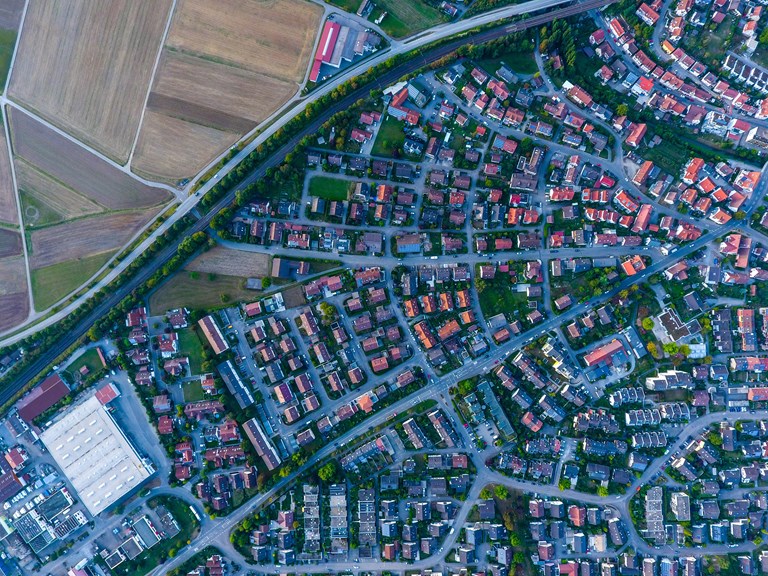Before the kit arrives
Classroom activities and resources to do before the kit arrives.
In Year 7 and 8, Geography focuses on water, liveability, landscapes and urbanisation. What better way to study these fundamental ideas than through the lens of First Peoples and modern-day farmers?
Before the kit arrives, using geographic skills and terminology, guide students through the key processes and changes that have occurred in your region over time. Students can be extended by addressing Year 9 concepts of food security in context of their own learning.
It is predicted that in the future, urbanisation will continue to increase as Australia’s growing population requires more housing, infrastructure, and services. For example, by 2036, the number of houses is projected to rise by 135 per cent in Delacombe, Ballarat, an historical farming region.
While urbanisation is important to maintain a strong economy, ensure we have safe housing, and can connect with services, only around 10 per cent of Australia is suitable for farming. Further, most of this arable land is distributed along the coast creating a conflict between the need for housing and the need for agriculture to grow enough food to eat. As a result, our growing population and need for resources will have an impact on our national food security.
Food security is a situation that exists when all people, at all times, have physical, social and economic access to sufficient, safe and nutritious food that meets their dietary needs and food preferences for an active and healthy life’HLPE, 2020
Break the class into five groups to research the following, and then share results with the class:
- Discuss the definition of food security and complete some research to highlight issues in food security on a global scale.
- Summarise the reasons for urbanisation in Australia and the consequences for agricultural productivity.
- Describe the interconnection between food security in Australia and urbanisation.
- How might urban sprawl impact the liveability of different regions?
- Using reliable websites, compare Australia’s food security levels with other nations. How might our high level of food security make Australia more liveable than other nations?
FAO predicts that by 2050, agriculture will be responsible for over half of the fresh water withdrawals from rivers, lakes, and aquifers. Water is vital for growth and production of food crops. As a result, agriculture is the largest user of fresh water globally and estimated to use over one hundred times more water than we use domestically.
Using the following websites research:
- Using a map, locate the main water networks in Australia (e.g. Murray-Darling Basin). How do these networks connect urban and agricultural regions? Brainstorm some issues that may arise from agricultural uses of these resources.
- Investigate how water is used throughout food growth, production, and delivery processes. Create an infographic to inform others about this water use.
- Do particular crops use more water than others? Why? In what phase of production does most of the water consumption occur?
- Australia’s climate is often described as dry and hot. How do we manage to produce so much of our own food under these conditions?
- Investigate some ways agriculturists overcome issues with water scarcity and pollution in Australia. Compare these strategies to others used in different world regions.
Web resources
Overview: Murray-Darling Basin (Victorian State Government)
Food processing: Water use in Australian food processing (Smart Approved WaterMark)
Water use on Australian farms (Australian Bureau of Statistics)
Irrigation (National Geographic)
Further reading
Food span: Food security and hunger lesson plan
FUSE Background Paper: Social factors and food choice in Australia
Historically, Australia has produced enough food to feed the local population and export goods overseas. While Australia still imports food products such as seafood, lollies, and oils, around 90 per cent of food sold in Australia is produced locally and 65 per cent is exported each year. On average, this results in a gross export value of around $45 billion to $48 billion per year. As a result, Australia is considered to be a food secure nation.
- Using Google Earth and observations describe your regions' natural and human characteristics (soil, water resources, vegetation density, urbanisation, climate etc). How might these characteristics impact the region’s ability to grow and produce food?
Write a shopping list to feed you and your friends for two days. Using your local supermarket website, investigate where these particular products come from.
Consider:
- Are they locally grown and produced or imported?
- Where are they made?
- Are you surprised by the results? Why?
- How might urbanisation play a role in these results?
- How might our access to water resources influence different product origins?
Create a glossary of the bolded terms throughout this section. Ask students to write a definition, use the term in a sentence, and draw a picture of the term (where possible).
| Term | Definition | Using it in a sentence | What does it look like? |
|---|---|---|---|
Consider the following statement: ‘Without access to reliable food sources, no place can be liveable.’
Discuss this as a class with reference to access, availability and reliability of food products in your region. Consider the ongoing conflict between urban development and agricultural land for food security.
Curriculum links for activities 1-5: VCGGK126, VCGGK119, VCGGK116, VCGGK112, VCGGK113, VCGGK106, VCGGK107, VCGGK108, VCGGC099, VCGGC102, VCGGC103
Cross curriculum links: VCEBR011








